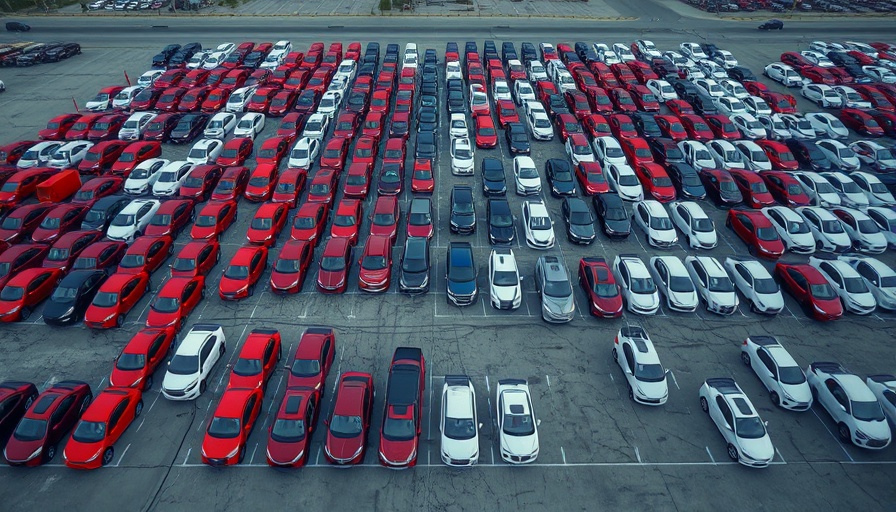
Understanding the Cool Down in New-Vehicle Sales
The new vehicle market is experiencing a notable transition as sales figures for May reveal a stabilization after a robust period. According to data from J.D. Power and GlobalData, total new-vehicle sales for the month are projected at 1,489,800 units, remaining flat compared to May 2024 after adjusting for selling days. Within this framework, retail sales see a modest uptick, suggesting that while consumer purchasing doesn’t indicate a steep decline, a cooling trend may be on the horizon.
Consumer Response to Tariffs Influences Market Dynamics
The intro of tariffs has been a significant element influencing new-vehicle sales. As reported, certain imports are expected to cost upwards of $4,275 more per vehicle due to these tariffs, prompting manufacturers to tread carefully when adjusting pricing strategies. The average retail transaction price for new vehicles has risen by $649 to $45,462, which is an increase of 1.4 percent from the previous year, but has dipped slightly from levels seen in April, indicating that consumer caution may be beginning to dictate market behaviors.
Shifts in Purchasing Patterns Highlight Future Challenges
Despite a positive year-over-year percentage increase in retail sales, the sales environment presents complexities. It's essential to consider the "pull-forward effect," as consumers rushed to make purchases in the first few months of the year, potentially skewing typical sales trajectories and foreshadowing potential struggles in the latter half of 2025. Thomas King from J.D. Power emphasizes the impact of this rush on future sales, pointing out that the payoff from these early transactions may hinder sales performance as the market normalizes.
Comparative Trends in Vehicle Sales
While the new-vehicle market in May shows signs of coherence with its previous performance, looking deeper reveals much about consumer sentiment. Sales data indicates that retail sales alone are on a slight rise, yet the broader economic forces, including tariffs and inflationary pressures, cast shadows on immediate prospects. Understanding these varying dynamics allows dealership owners and general managers to adapt strategies effectively.
Strategies for Dealerships Moving Forward
As challenges loom ahead, dealership owners must recalibrate their strategies to mitigate risks associated with fluctuating sales trends. Emphasizing customer education about the impact of tariffs and inflation on vehicle pricing can nurture trust and foster continued consumer interest. Additionally, incentivizing purchases through flexible financing options or enhanced trade-in values might encourage hesitant buyers to engage, helping to sustain sales momentum.
Conclusion: Navigating Uncertain Waters to Find Success
The new vehicle market's transition to a cooling phase presents a mix of opportunities and pitfalls. Dealership owners and GMs should refine their approaches to customer engagement and adapt to the evolving economic landscape. By aligning with consumer needs and providing compelling buying incentives, dealerships can position themselves for ongoing success even in a shifting market.
 Add Row
Add Row  Add
Add 




Write A Comment